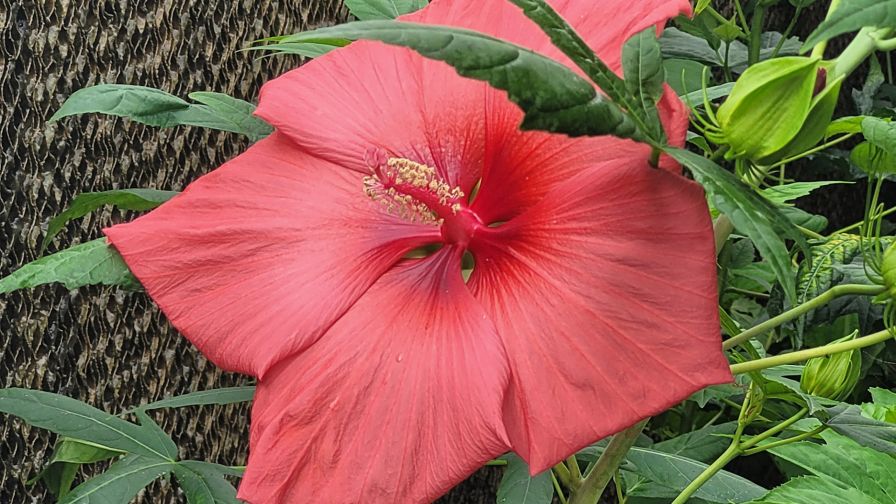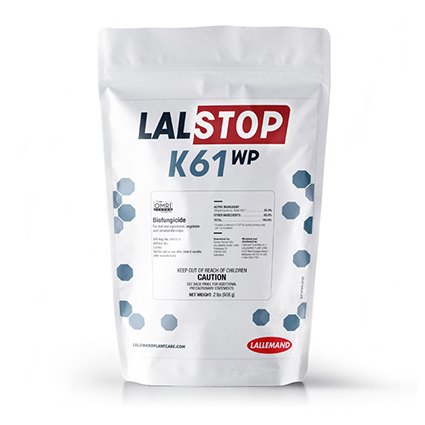A New Frontier in Hardy Hibiscus Breeding

The coral colored hardy hibiscus is the latest unique color developed by Dariusz Malinowski, Ph.D., a Texas A&M AgriLife Research plant physiologist and ornamental plant breeder. (Texas A&M AgriLife photo by Dariusz Malinowski)
After the breakthrough achievements of creating blue and maroon flower colors in hardy hibiscus, Texas A&M AgriLife plant physiologist and breeder Dariusz Malinowski, Ph.D., has now developed the first-ever coral-colored hibiscus.
Malinowski leads a forage and ornamental plant breeding program, focusing on perennial cool-season forage grasses and hardy hibiscus at the Texas A&M AgriLife Research and Extension Center at Vernon. He is also a professor in the Texas A&M College of Agriculture and Life Sciences Department of Soil and Crop Sciences.
The coral-colored hibiscus is the latest creation from what started as a hobby for Malinowski in 2005 and has grown to the point that Vernon is now considered the Hibiscus Capital of Texas.
“This new hibiscus hybrid is the latest example of how Dr. Malinowski’s work has put the Texas A&M AgriLife center here in Vernon at the forefront of hibiscus breeding,” says Rick Vierling, Ph.D., Director of the Texas A&M AgriLife Research and Extension Center at Vernon and director of Texas A&M AgriLife Foundation Seed. “Dr. Malinowski’s releases have generated tremendous excitement worldwide, and we’re glad to have hibiscus breeding as a cornerstone program of the center.”
Urban consumers continuously want new colors and petal shapes, Vierling said. These discoveries are licensed to Texas horticultural companies who then make the new varieties available for purchase. Texas A&M AgriLife, ornamental plant companies and consumers all benefit.
Moving From a Hobby to Building a Hibiscus Breeding Program
Malinowski began breeding hardy hibiscus with the help of Steve Brown, the former director of Texas A&M AgriLife Foundation Seed, who saw a big potential for commercialization of Malinowski’s hibiscus hybrids. This hobby and passion became a research program at the Texas A&M AgriLife center in 2010.
“I think working with Steve Brown was the best experience a plant breeder could have,” Malinowski says. “Combining passion, knowledge, and persistent pursuit in reaching for the impossible with business experience in the ornamental plant industry and commercialization was the core of the success of our hibiscus breeding program.”
A decade later, Malinowski is well known in the ornamental plant industry thanks to his extraordinary ability to create out-of-this-world novel flower colors in hardy hibiscus. His first bluish flowered hibiscus, ‘Blue Angel’, was released in 2012, only two years into the life of the hibiscus breeding program.
“Blue Angel was not perfect, but it had an outstanding trait that resulted in more than 30 experimental hibiscus lines with blue flowers currently explored in our breeding program,” he says, adding that every season he selects new hybrids to improve the blue color and plant growth habit to meet industry standards.
“My ultimate goal is to create a sky-blue flower on a plant with dark foliage,” Malinowski says. “Combining these two traits in one plant has been very difficult. For instance, a recently created blue-flowering hibiscus hybrid with attractive, darker foliage consists of over 60 parental ancestors originating from four hibiscus species, and more parents are still being hybridized with this plant.”
Two bluish-flowering cultivars, ‘Blue Brulee’ and ‘Cordon Bleu’, were commercialized by J. Berry Nursery of Grand Saline in 2018.
“We have made tremendous improvement in the expression of the blue pigment and plant growth habit since the release of Blue Brulee and Cordon Bleu,” Malinowski says. “When I first mentioned my dream of creating a blue-flowering hibiscus to Steve Brown, he just laughed. But I knew he had high hopes for me and believed I could do that.”
Although Malinowski introduced many novel colors since the release of Blue Angel winter-hardy hibiscus, including magenta, silver, maroon, purple, blue metallic, and dual and multicolored flowers, the next frontier was to create orange- and yellow-blooming hibiscus hybrids.
Tackling the Elusive Oranges
“I knew that creating orange and yellow pigments in hardy hibiscus flowers would be much more difficult than the blue pigment because there were no candidate parents with even remotely promising flower colors,” Malinowski says.
He decided to focus on the orange color first, and that was the beginning of the coral color.
“Among our 20,000-plus experimental plants, I noticed a couple of plants with distinctive hues of red, shifting into coral tones,” Malinowski says.
After a few hybridization cycles, he developed a hybrid with pinkish-coral hues. That was the beginning of his new dream, just like Blue Angel a decade before.
“The flower color of that hybrid was quite unstable, depending on temperature, soil quality and solar radiation intensity,” Malinowski says.
Using a gene stacking method, Malinowski says he spent a couple more years hybridizing parental plants expressing similar flower colors and exposing seeds to electromagnetic radiation to finally discover one plant with the illusive, dark-coral flower color.
The coral-flowering hybrid will be further bred for improved plant growth characteristics and dark foliage. Eventually, it will also become the start of a breeding program to create an orange-flowering hibiscus.
The Last Frontier —Yellow
The last frontier in Malinowski’s research plan is to develop yellow-flowering hardy hibiscus.
“This may be the most challenging goal, as yellow pigment does not occur in this and related species of rose mallows,” he says.
Malinowski said there are two hardy hibiscus cultivars on the market with a light, creamy flower color, ‘Old Yella’ and ‘New Old Yella’, but they are not the true yellow he is looking for.
“I have been hybridizing a couple of our early hybrids expressing creamy flower colors similar to that of Old Yella and New Old Yella, and we are on the right track,” Malinowski says. “The yellow pigment is already quite pronounced in opening flower buds of the new hybrid, but as the flower opens, the yellow color quickly fades to creamy.”
He says he’s seen color instability with the early blue- and coral-flowering hybrids before and is confident further breeding could stabilize the yellow pigment.
Malinowski says his program owes a big thanks to Vernon High School for hosting his breeding program in its greenhouses over the past year after his were destroyed. The school’s generosity allowed him to continue making strides such as this new coral-colored flower and the potential yellow flowers.








